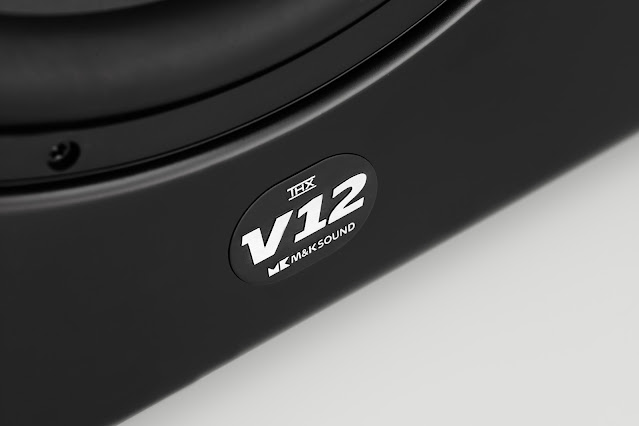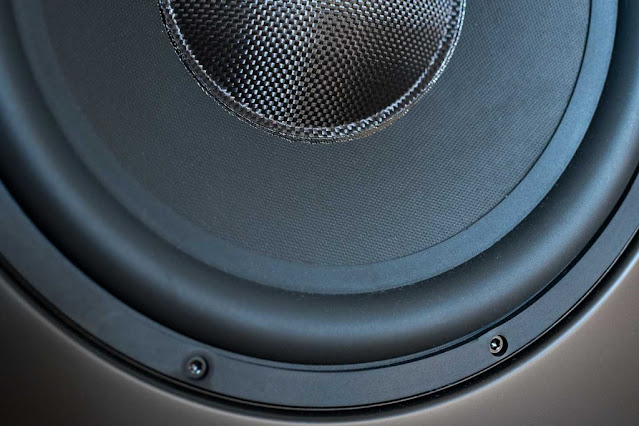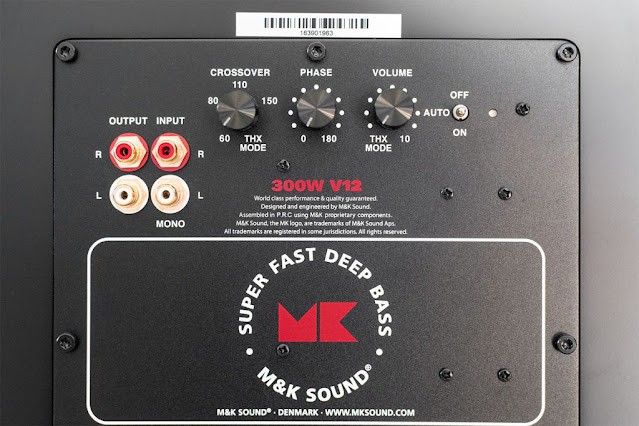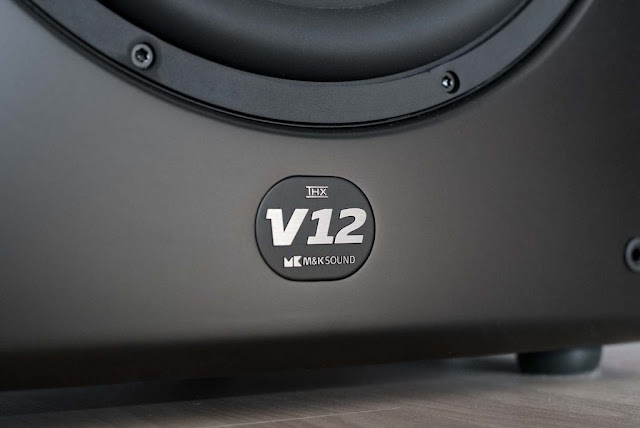Miller & Kreisel V12 Review
Something has to work: A THX subwoofer from the "inventor" of the subwoofer principle. We had the new subwoofer Miller & Kreisel V12 in the test room for a few weeks, which, in contrast to its large-volume name, appears comparatively compact. The statement that Miller & Kreisel invented the subwoofer cannot be completely ignored at this point; at least the concept of the satellite subwoofer combo - together with what is now called bass management - goes back to M&K, it is even the original development of the duo Jonas Miller and Ken Kreisel from 1973 - at that time for Steely Dan's mastering Studio. And the two M&Ks also have the “Volkswoofer” from 1976, the first bass box of a modern design with an integrated amplifier and filters, to their credit.
In the test, we had the biggest hum from the V series - a highly potent active woofer with a 30 cm (i.e. 12 inch) diameter chassis and which consequently goes by the name of V12. After all, this is so level-stable and low-interference that it was awarded the THX Select2 certificate. This qualifies it to be able to fill rooms up to around 30m² with a standard level according to Hollywood specifications without breaking a sweat. That is already very challenging.
What puzzles the experts is the design chosen for this with a closed housing, because in this performance class designs are common that use the rear sound of the woofer membrane by means of bass reflex or related systems such as passive membranes to increase the sound pressure. With the V12, the energy radiated to the rear of the woofer remains unused. However, this improves the membrane movement's damping and promotes the reproduction's precision. M&K also avoids the problem of flow noise in the bass reflex channel.
Background noise is one of the biggest problems of all subwoofers. And these often come from the woofer chassis itself – in addition to vibrations in the housing. With the energy of a percussion drill, a motor consisting of a coil and magnet moves a piston acting as an air pump back and forth with force. Amazingly strong forces are at work here, which of course also emit mechanical noises. M&K therefore cleverly fastens the woofer not only in the baffle at the front but also on the back with the middle housing brace, as can be seen in the sectional drawing. The forces and loads are distributed and derived more evenly.
The woofer uses a stiff cardboard cone. In the middle, a calotte made of fiberglass mesh seals the core. The beaded surround uses a rubber-like material called NBR (Nitrile Butyl Rubber).
The electronics of the M&K V12 are pleasantly concentrated on the essentials. With the infinitely variable phase and the option of looping through the audio signal, two luxury functions are available. The latter allows the use of several subwoofers in a simple manner. With its given size and the affordable price, it is a very sensible offer. Despite the lack of cooling fins, the V12 hardly got more than lukewarm in the test, even under constant fire, which speaks for the good efficiency of the power amplifier used.
When measuring, all Miller & Kreisel test subjects showed that they know a lot about subwoofers that others only talk about. The frequency response of the unfiltered V12 ranged from under 25 to well beyond 500 Hertz. One might think that a subwoofer's frequency response is not important beyond 100Hz, but the opposite is true. Let's assume we set the low-pass filter for the subwoofer at 80Hz with 18dB/octave, as is common practice. Then he plays at 160 Hertz with only 18dB less level and at 320 Hertz with 36dB.
As with all simply knitted, purely analog low-pass filters, the scale on the "Crossover" control of the Miller & Kreisel V12 is more wishful thinking than corresponding to real frequency responses. Most users of a THX woofer therefore rely on the bass management of the AV processor and do not need this control anyway, or set it to "THX Mode", which bypasses all built-in filters. For those who want to integrate the Miller & Kreisel V12 into a classic stereo system, the motto is: try it out for a long time or, better yet, measure it.
In the LowBeats test cinema , his two M&K MPS2510P home cinema satellite speakers and the slightly more powerful M&K S300 front speakers , which we also tested, served as playmates. Thanks to the good-natured characteristics, the adaptation turned out to be an easy game. In view of the compact size (46.5 x 36 x 40 cm) and the moderate price, my expectations in terms of level and draft were not very high - and were happily exceeded. Just a few bars of provocatively selected music made it clear that this subwoofer can do a lot! No woofer in this price range had ever delivered such a dust-dry, crisp, full foundation.
Even when I pushed the membrane deflection of the Miller & Kreisel V 12 to its limits, nothing began to rattle, scrape or whistle. Otherwise, only much more expensive subwoofers play so interference-free at high levels - which usually require a pallet truck to position. I would not have thought that so much can come from a box weighing only 22 kilos. All respect, they know something about subwoofers at Miller & Kreisel.
Conclusion: Miller & Kreisel V12 – bone dry!
The Miller & Kreisel V12 refutes the rule that compact subwoofers have to be bass reflex-supported in order to play loud or deep. Clever construction and well-balanced components prove: The compact V12 plays deep, can also do that with a decent level according to THX specifications, and sounds as controlled and balanced as other much larger woofers. This also qualifies it as the perfect playing partner in audiophile stereo systems. Thanks to a cleanly playing frequency response deep into the fundamental range, it can always be connected harmoniously. M&K Sound promises a "Super Fast Deep Bass" in the advertising brochure. And they keep the promise. A perfect performance!
Official Website: Miller & Kreisel V12
Miller & Kreisel V12 Specifications:
| Amplifier Power: | 300 watt RMS /500-watt peak |
| Frequency Response: | 20 – 200 Hz +/- 2 dB |
| Total Harmonic Distortion: | 0.5% 300 watt, 4 ohm |
| AC Power Consumption: | Standby/Average/Max 0,5/50/300W |
| AC Line Voltage: | 100-240 VAC 50/60Hz 6.3A |
| LFE Input: | L/R line level RCA |
| LFE Passthrough Output: | L/R line level RCA |
| Lowpass Filters: | 60–200 Hz Continuously variable, No low pass THX mode |
| Phase: | 0-180 deg : Continuously variable |
| Volume control: | Continuously variable / Fixed THX |


















.jpg)



0 Comments